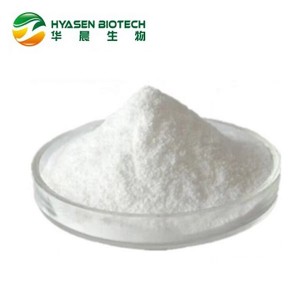
Amoxicillin Trihydrate (61336-70-7)
Description
● Amoxicillin Trihydrate (61336-70-7)
● CAS No.: 61336-70-7
● EINECS No.:248-003-8
● MF: C16H19N3O5S
● Package: 25kg/drum
Product Details
Amoxicillin trihydrate, a semi-synthetic broad-spectrum penicillin, has the same antibacterial spectrum, effect and application as ampicillin. Amoxicillin trihydrate is a hydrate that is the trihydrate form of amoxicillin; a semisynthetic antibiotic, used either alone or in combination with potassium clavulanate (under the trade name Augmentin) for treatment of a variety of bacterial infections. It has a role as an antibacterial drug and an antimicrobial agent. It contains an amoxicillin. Amoxicillin is a broad-spectrum, semisynthetic aminopenicillin antibiotic with bactericidal activity. Amoxicillin binds to and inactivates penicillin-binding protein (PBP) 1A located on the inner membrane of the bacterial cell wall. Inactivation of PBPs interferes with the cross-linkage of peptidoglycan chains necessary for bacterial cell wall strength and rigidity. This interrupts bacterial cell wall synthesis and results in the weakening of the bacterial cell wall and causes cell lysis.
Amoxicillin was discovered in 1958 and came into medical use in 1972. Amoxil was approved for medical use in the United States in 1974, and in the United Kingdom in 1977. It is on the (WHO) World Health Organization's List of Essential Medicines.It is one of the most commonly prescribed antibiotics in children. Amoxicillin is available as a generic medication.In 2020, it was the 40th most commonly prescribed medication in the United States, with more than 15 million prescriptions.
Application
It is used to treat bacterial infections, such as chest infections (including pneumonia) and dental abscesses. It can also be used together with other antibiotics and medicines to treat stomach ulcers. It's often prescribed for children, to treat ear infections and chest infections.
| Testing terms | Standards | Results |
| Assay | 95.0%~102.0% | 99.9% |
| PH | 3.5~5.5 | 4.6 |
| Appearance of solution | 0.5mol/L HCL≤2#
2mol/L NH4 OH≤2# |
1#1# |
| Water | 11.5%~14.5% | 13.2% |
| Related substances | Impurity (max.)≤1.0% | 0.13% |
| Specific optical rotation | +290''~+315'' | +305° |
| Sulfated ash | ≤1.0% | 0.1% |
| N-N-Dimethylannline | ≤20ppm | Never used in the production |
| Methylen chloride | ≤600ppm | 296ppm |
| Triethylamine | ≤320ppm | 155ppm |
| Acetone | ≤3000ppm | 95ppm |
| Conclusion: Complies with EP 6th Standard. | ||














